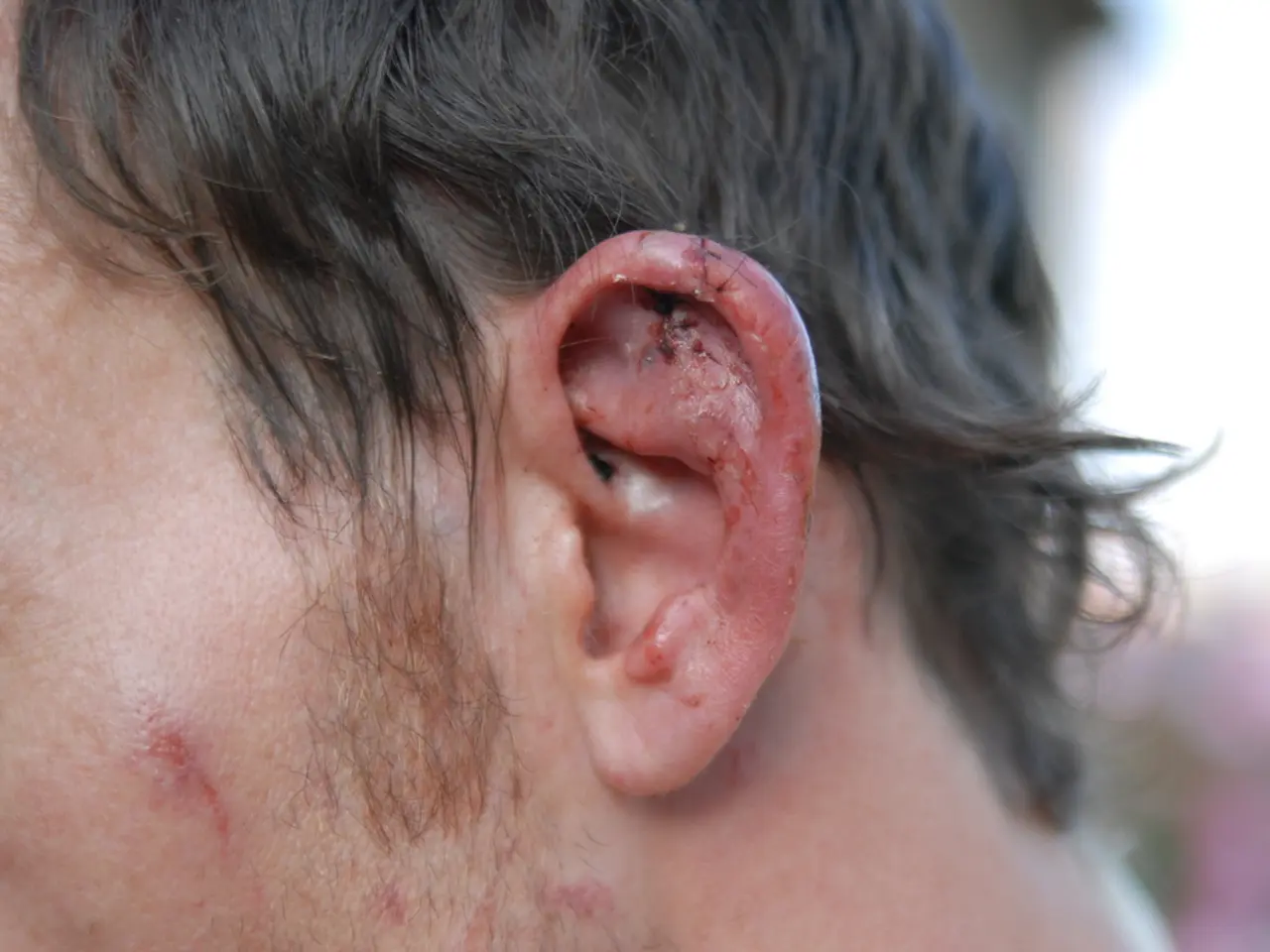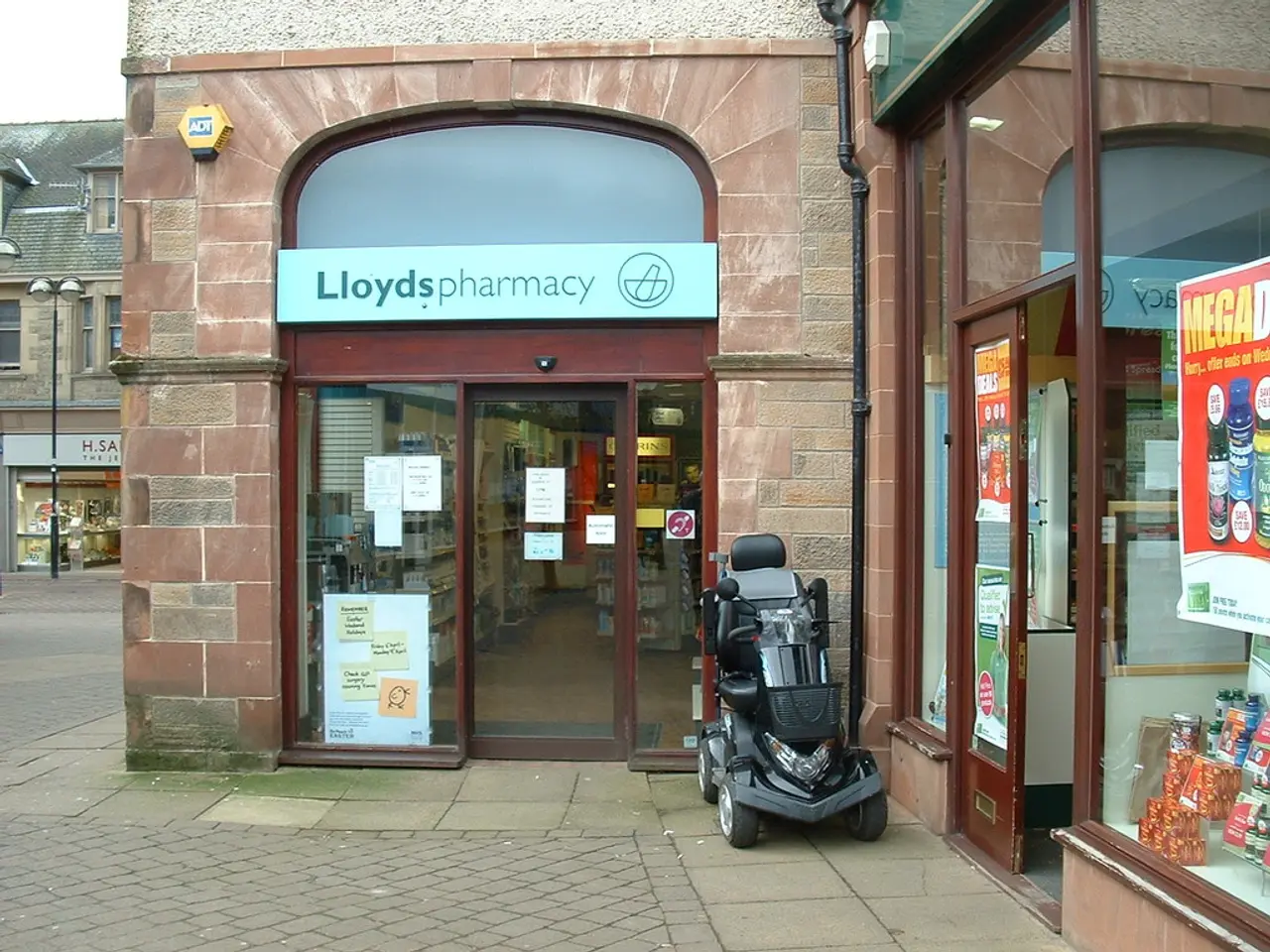Clogged Sebaceous Glands: Distinguishing from Blackheads, Remedies, and Further Information
In the world of skincare, two terms often cause confusion - sebaceous filaments and blackheads. While they may share similar appearances, they have distinct differences in terms of structure, appearance, extraction, and treatment.
Sebaceous filaments are natural, tube-like structures within sebaceous pores that help guide sebum to the skin's surface. Unlike blackheads, which are clogged pores filled with sebum, dead skin cells, and sometimes bacteria, sebaceous filaments are part of the skin's normal anatomy.
When sebum production increases, sebaceous filaments become visible as small, grayish-yellow dots on the skin. Blackheads, on the other hand, are dark or black due to the oxidation of the material within the pore. They are more noticeable and often appear as dark spots on the skin.
Extraction is not recommended for sebaceous filaments as they are natural and will replenish themselves even if removed. Squeezing can lead to scarring and infections. Blackheads, however, may require professional extraction for severe cases, but at-home extraction is generally discouraged due to the risk of infection and scarring.
The best approach for sebaceous filaments is to leave them alone and focus on maintaining good skin hygiene and balance. This includes using gentle cleansers and avoiding excessive squeezing or manipulation. Blackheads treatment involves using topical retinoids to promote skin renewal and reduce clogged pores. Chemical exfoliants like salicylic acid or glycolic acid, along with gentle cleansers containing benzoyl peroxide, can help remove clogs and prevent future blockages.
Controlling the amount of oil on the skin and using exfoliating skin care products can help keep the pores clear and minimize the appearance of sebaceous filaments. Tea tree oil, an essential oil often used to treat acne and may also help with oily skin, should be used with caution due to potential irritation and allergic reactions. Salicylic acid, a derivative of aspirin, may help reduce the amount of oil on the skin and the size of sebaceous filaments, but anyone allergic to aspirin should avoid it.
Sun protection is important, as long-term sun exposure can make pores larger and increase the risk of skin damage and skin cancer. Using sunscreen daily and wearing a protective hat and clothing that covers the skin when spending extended periods in the sun is a good idea. People with oily skin and large pores may prefer to use oil-free and noncomedogenic sunscreen, which does not clog pores.
In extremely rare cases, some people can develop sebaceous gland carcinoma, a rare type of cancer that can occur anywhere on the body but tends to appear on the upper eyelid or around the eye. Overproduction of sebum can cause whiteheads or blackheads.
The American Academy of Dermatology advises against squeezing or popping acne, and it's essential to remember that sebaceous filaments are structures that allow sebum to flow to the surface of the skin, not blockages like blackheads.
By understanding the differences between sebaceous filaments and blackheads, individuals can make informed decisions about their skincare routines and seek appropriate treatments when necessary.
- Certain skin conditions like atopic dermatitis, psoriasis, and acne can benefit from a predictive approach in skin-care, using science to understand their causes and treatments.
- Skin conditions such as eczema (atopic dermatitis), asthma, and depression can be linked to underlying health issues like COPD, diabetes, and fitness-and-exercise habits.
- Some individuals may experience excessive oil production on their skin, which can lead to oily skin-care concerns and the visibility of sebaceous filaments.
- Health-and-wellness studies suggest that maintaining a balanced diet and regular exercise can help manage conditions like depression, asthma, and diabetes, while improving overall skin health.
- In the realm of health-and-wellness, it's crucial to understand that dermatitis and sebaceous filaments are different skin concerns, requiring unique treatments and care.
- A tiered skincare routine may include products specifically formulated for oily skin, including moisturizers that help control oil production while providing hydration for healthy skin.
- Sebaceous gland carcinoma, a type of cancer, can occur in rare cases, often appearing on the upper eyelid or around the eye, highlighting the importance of regular skincare check-ups.
- By adopting a comprehensive approach towards health-and-wellness, individuals can better manage a variety of skin concerns, from sebaceous filaments and blackheads to more complex dermatological issues.
- When it comes to skincare, understanding the composition and function of the skin, including sebaceous filaments, can help in developing an effective, personalized skincare routine.




